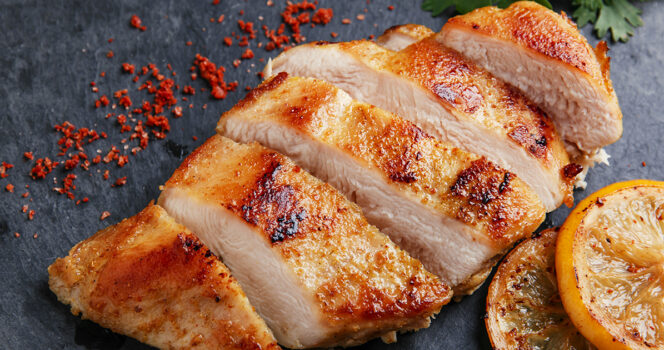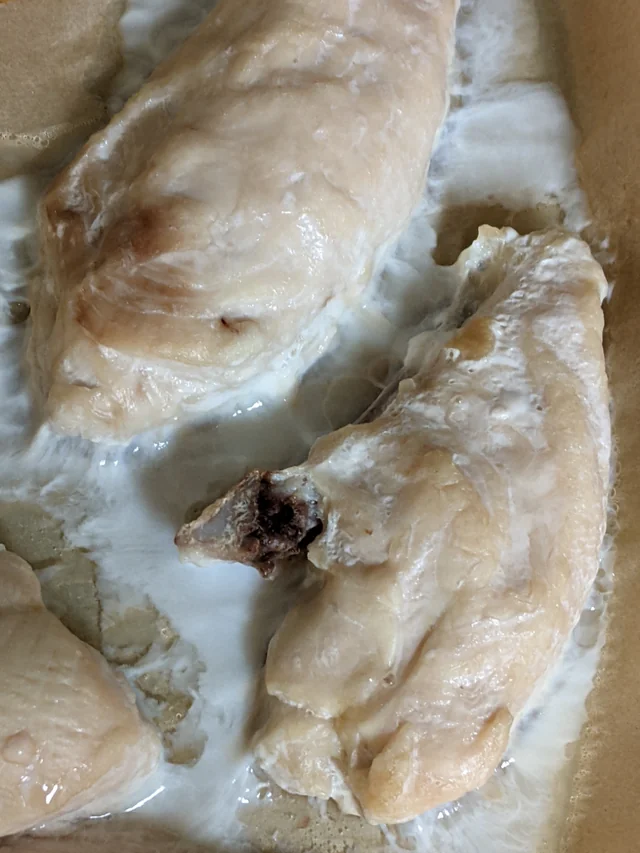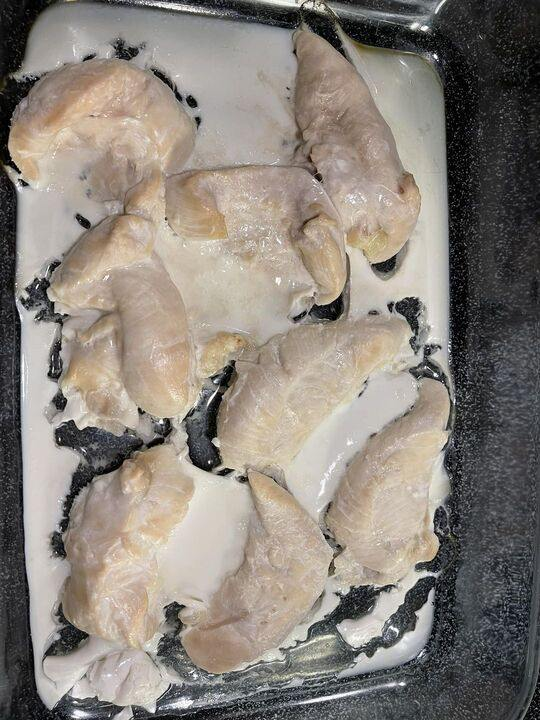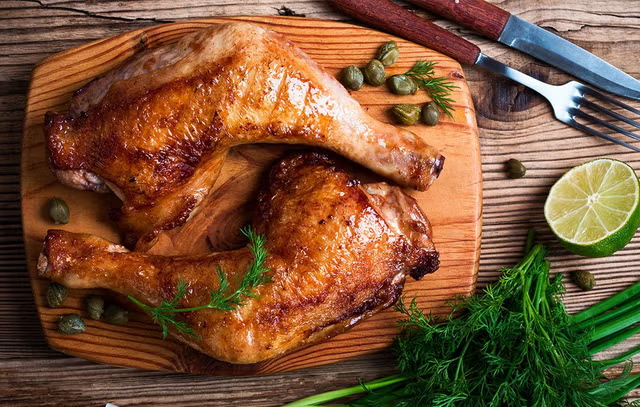Cooking chicken seems simple, but sometimes unexpected things happen. Have you ever taken your beautifully seasoned chicken out of the oven, only to find a white, gooey substance seeping from it? It might look unappetizing, but don’t panic—this is completely natural.
Let’s break down what this mysterious substance is, why it appears, and how to reduce it while keeping your chicken juicy and delicious.

What Is the White Goop That Comes Out of Chicken?
The white, jelly-like substance you see is actually a mix of protein and water that coagulates when the chicken is cooked.
Think of it like an egg white turning solid when exposed to heat. Chicken contains high amounts of protein, and when heated, those proteins denature, releasing moisture and forming this white residue.
This happens more often in:
- Boneless, skinless chicken breasts – They have less fat and a higher concentration of protein.
- Frozen chicken that hasn’t been fully thawed – Ice crystals damage muscle fibers, leading to more moisture loss during cooking.
- High-heat cooking methods – Roasting, baking, or searing at very high temperatures causes proteins to contract too quickly, forcing out liquid.
Video: What the white stuff that comes out of chicken when you cook it?
Is the White Goop on Chicken Safe to Eat?
Yes! The white substance is completely safe to eat because it’s just protein and water. It does not indicate that the chicken is undercooked or spoiled.
However, if your chicken has:
- A slimy texture before cooking
- A foul or sour smell
- Discoloration (gray or green patches)
Then the chicken might be spoiled, and you should throw it away. The white goop itself is harmless, but if your chicken has any of the above signs, don’t risk eating it.
Why Do Some Chickens Release More White Stuff Than Others?

Several factors influence how much of this white protein leaks out when cooking.
1. Factory-Farmed vs. Organic Chicken
Commercially processed chicken often contains more water due to brining or moisture-enhancing injections. This results in more liquid escaping during cooking.
Air-chilled or organic chicken tends to have less excess water, which reduces the amount of white residue you see.
2. Cooking Temperature
If you cook chicken at high temperatures, proteins contract too quickly, squeezing out more water and forming the white goo. Cooking at a moderate temperature helps minimize this.
3. Frozen vs. Fresh Chicken
Frozen chicken releases more water and protein because ice crystals break down muscle fibers. If the chicken isn’t fully thawed before cooking, expect to see more of the white substance.
How to Reduce the White Goop When Cooking Chicken

If you find the white substance unappealing, here are some ways to reduce it.
1. Cook at a Lower Temperature
Instead of cooking at 400°F (205°C) or higher, try 350°F (175°C) for a longer time. A slow cook allows the proteins to break down gradually, reducing the white residue.
2. Brine Your Chicken
Soaking chicken in a simple saltwater brine (1/4 cup salt per 4 cups water) for 30 minutes to an hour helps it retain moisture, reducing protein loss during cooking.
3. Sear Before Baking
Searing the chicken in a hot pan before transferring it to the oven can lock in juices, minimizing protein leakage.
4. Let the Chicken Rest
Cooking cold chicken straight from the fridge increases moisture loss. Let it sit at room temperature for 15–20 minutes before cooking for better results.
5. Choose Higher-Quality Chicken
If possible, opt for air-chilled or organic chicken, which contains less excess water than factory-farmed alternatives. This simple switch can help reduce the white goop significantly.
Final Thoughts

The white substance on cooked chicken is nothing more than denatured protein and water, and it’s completely safe to eat. While it might not look appetizing, it doesn’t affect the taste or quality of your chicken.
If you want to minimize it, cook at a lower temperature, brine your chicken, and allow it to rest before cooking. However, some protein leakage is natural and unavoidable, so don’t stress over it. As long as your chicken smells fresh and has no signs of spoilage, it’s perfectly good to eat!


